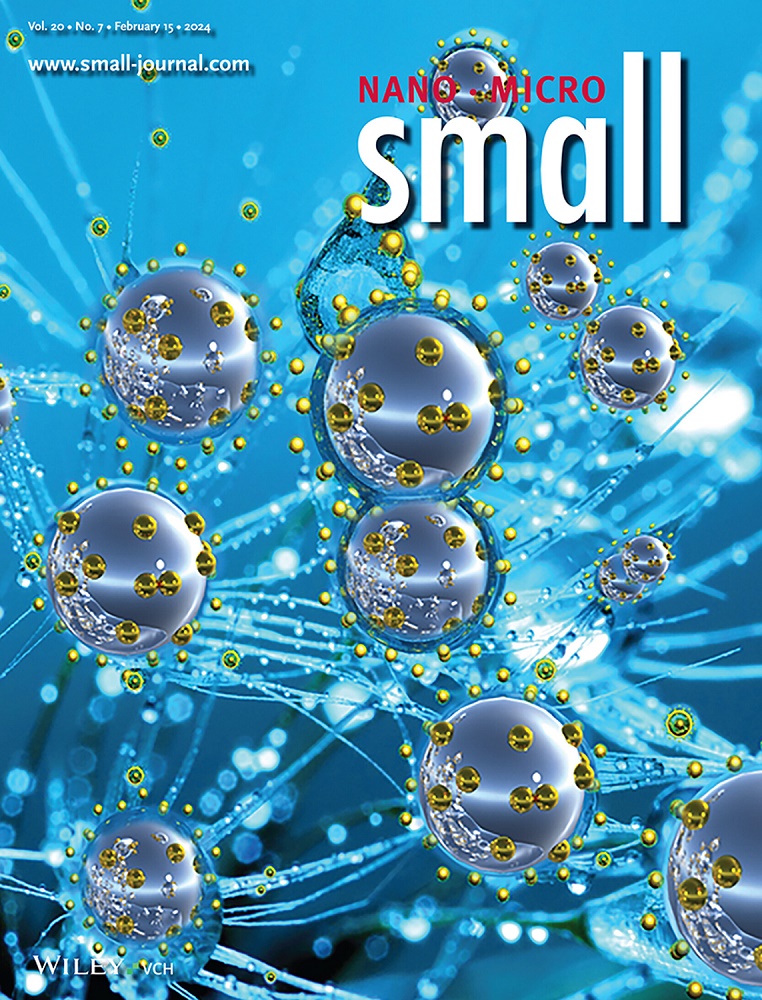复合水凝胶的创新和应用:从基于聚合物的体系到金属离子掺杂和功能纳米材料增强的体系结构
IF 13
2区 材料科学
Q1 CHEMISTRY, MULTIDISCIPLINARY
引用次数: 0
摘要
水凝胶是通过物理相互作用或共价键交联的三维聚合物网络。由于其优异的生物相容性和水溶性,被认为是生物材料的通用制造平台。特别是,单组分水凝胶表现出与上述相似的性能,但有明显的限制,如机械性能差、迅速膨胀和意想不到的不稳定性。它限制了在生物医学、机械加工和电化学工程中的应用。为了解决这些限制,研究人员研究了复合水凝胶的结构、性质和扩展应用。主要研究不同材料集成、力学性能扩展、性能功能多样、优势明显的复合水凝胶的制备。综述了水凝胶基高分子材料的研究进展,重点介绍了水凝胶基高分子材料的制备方法、作用机理和技术进展。综述了金属离子、纳米材料、生物活性分子等创新元素的引入对水凝胶性能的积极影响及其开创性工作,为水凝胶在特定应用要求下的设计和优化提供了新的视角。最后,展望了复合水凝胶面临的挑战和未来的发展潜力,强调了复合水凝胶在设计、功能集成和应用适用性方面的不断改进,并揭示了复合水凝胶在该领域的进一步发展前景。本文章由计算机程序翻译,如有差异,请以英文原文为准。
Innovations and Applications of Composite Hydrogels: from Polymer‐Based Systems to Metal‐Ion‐Doped and Functional Nanomaterial‐Enhanced Architectures
Hydrogels are 3D polymer networks cross‐linked by physical interactions or covalent bonds. Been considered as versatile fabrication platforms for biomaterials due to their excellent biocompatibility and water‐solubility. Particularly, the single‐component hydrogels exhibit similar properties as above, but have obvious restrictions such as poor mechanical properties, rapid swelling, and unexpected instability. It can limit applications in biomedicine, mechanical proceeding, and electrochemical engineering. To address these limitations, researchers have investigated composite hydrogels’ construction, properties, and expanded applications. It mainly focuses on the fabrication of composite hydrogels with integrations of different materials, expanded mechanical properties, varied performances, functionalities, and obvious advantages. This review expounds on the developments in hydrogel‐based polymer materials, especially the progress made in the preparation methods, the mechanism of action, and technology development. The review also explores the positive impact of the introduction of innovative elements such as metal ions, nanomaterials, and bioactive molecules on the performance of hydrogels and their pioneering works, providing new perspectives for the design and optimization of hydrogels under specific application requirements. Finally, it looks forward to the challenges and future development potential of composite hydrogels, emphasizing the continuous improvement in design, functional integration, and application suitability, and reveals further prospects in this field.
求助全文
通过发布文献求助,成功后即可免费获取论文全文。
去求助
来源期刊

Small
工程技术-材料科学:综合
CiteScore
17.70
自引率
3.80%
发文量
1830
审稿时长
2.1 months
期刊介绍:
Small serves as an exceptional platform for both experimental and theoretical studies in fundamental and applied interdisciplinary research at the nano- and microscale. The journal offers a compelling mix of peer-reviewed Research Articles, Reviews, Perspectives, and Comments.
With a remarkable 2022 Journal Impact Factor of 13.3 (Journal Citation Reports from Clarivate Analytics, 2023), Small remains among the top multidisciplinary journals, covering a wide range of topics at the interface of materials science, chemistry, physics, engineering, medicine, and biology.
Small's readership includes biochemists, biologists, biomedical scientists, chemists, engineers, information technologists, materials scientists, physicists, and theoreticians alike.
 求助内容:
求助内容: 应助结果提醒方式:
应助结果提醒方式:


